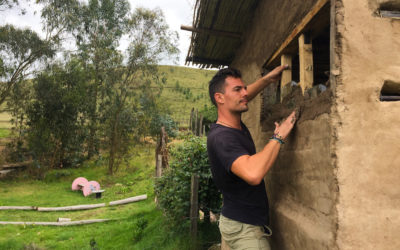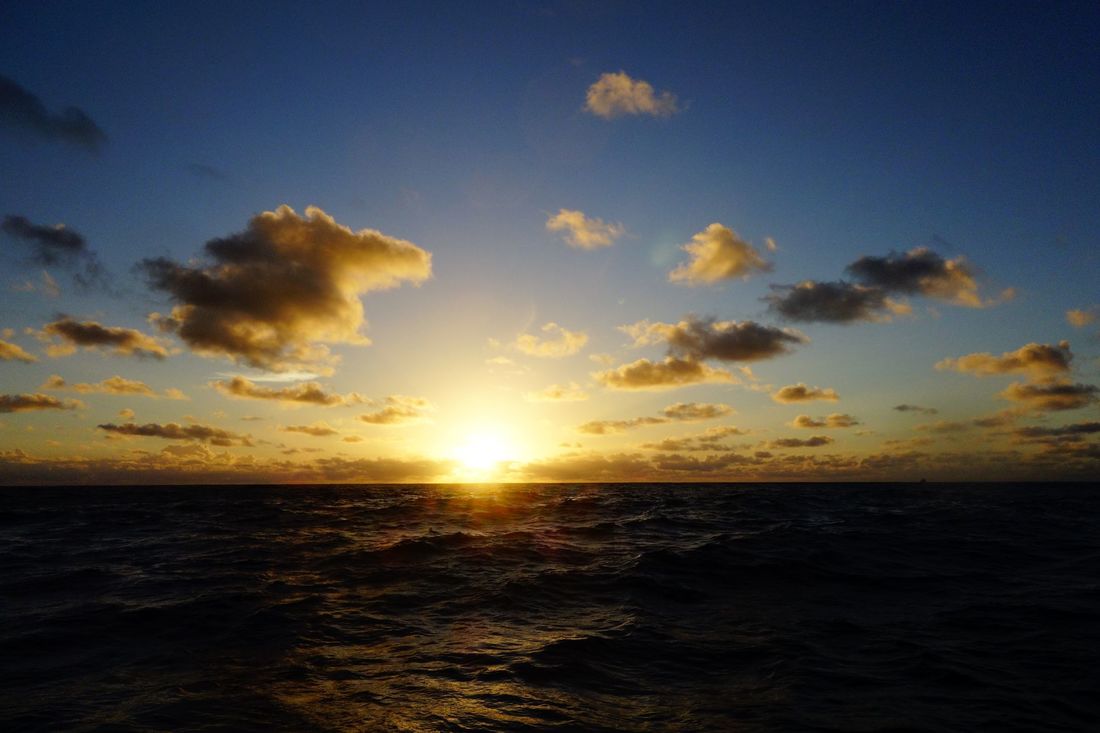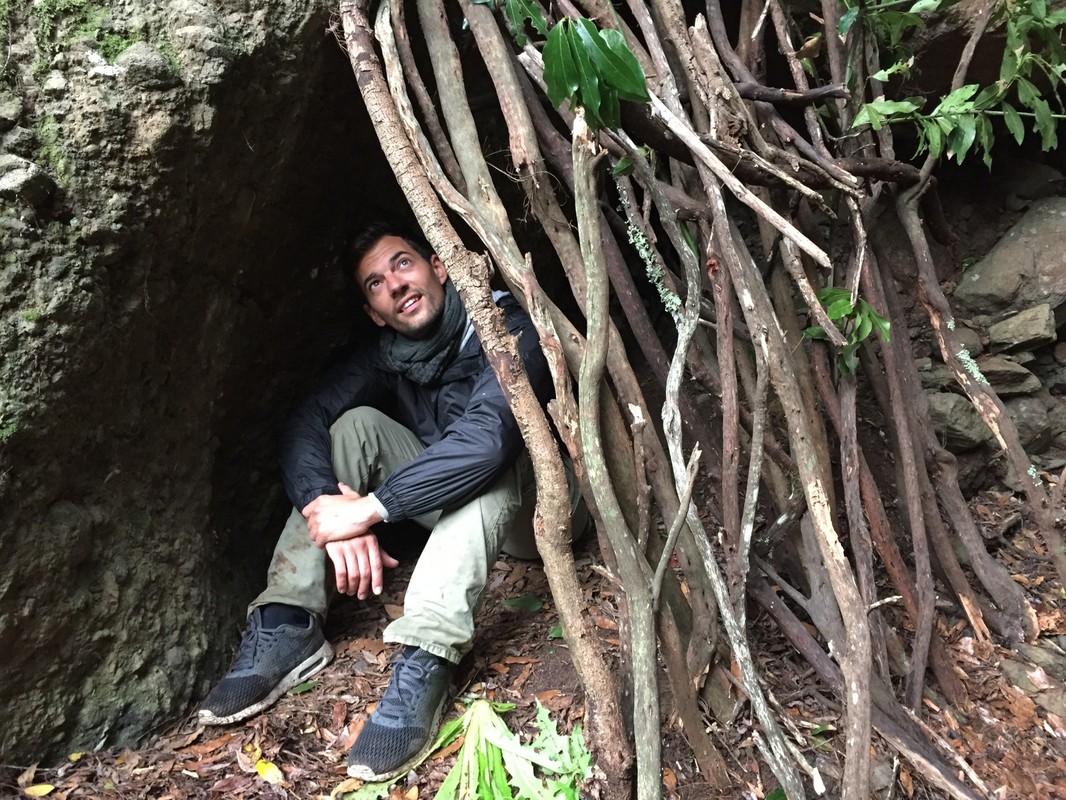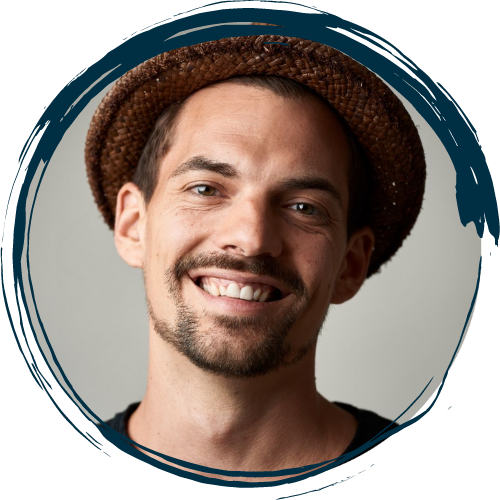It’s been more than forty years since local treasurers discovered this ancient city of the Indios in the deep jungle. Today „Ciudad Perdida“ in the mountains of Sierra Nevada in the north of Colombia is ranked upon South America’s most exciting adventure treks. Four days of hiking in the heat of the rainforest with a gazillion of mosquitos and three nights in the camps along the way – so far, so challenging. Two days of heavy rain turned the trek into a mudslide though and made a common adventure extraordinary.
Sweat runs down my cheeks
It’s not even twenty minutes since we started walking the narrow trek of white sands that leads straight into the jungle and my skin gleams in the glowing sun. Mosquito repellent itches my hot skin. The Sierra Nevada is located close to the Caribbean Sea and is known as the highest coastal area in the world. This proper uphill passage shall be the beginning of a 24 kilometer hike in each direction full of massive trees and tropical temperatures and these tiny insects that try to bite us in every possible moment. All for discovering a mystical part of Colombia’s history: the ruins of an ancient Indio city that has been built more than 1.200 years ago.

Our guide is an Indio himself
Eliseo is traditionally dressed in white clothes and has long black hairs. They believe that white is the color of nature and as trees grow wild in the jungle not cutting their hair brings them closer to the harmony of their environment. Eliseo knows a lot about the trek and is eager to tell. His knowledge can be held responsible for his footwear, some knee high rubber boots. „How uncomfortable“, I thought, being happy to have my feet breathing through the thin material of my Nike Airs.
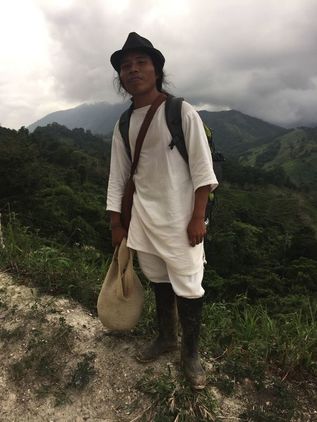
I should learn early enough how wrong I was
The trek leads in both directions, means all the tricky parts walked one way need to be walked back when going home. A girl came along our path, limping, breathing heavily with her body full of mosquito bites and scratches. „You will soon look like me“, she said with a compassionate smile, apparently being happy that she has almost made it back. „Well, the jungle might not be for everyone“, was our silent and playful response. How little we knew.
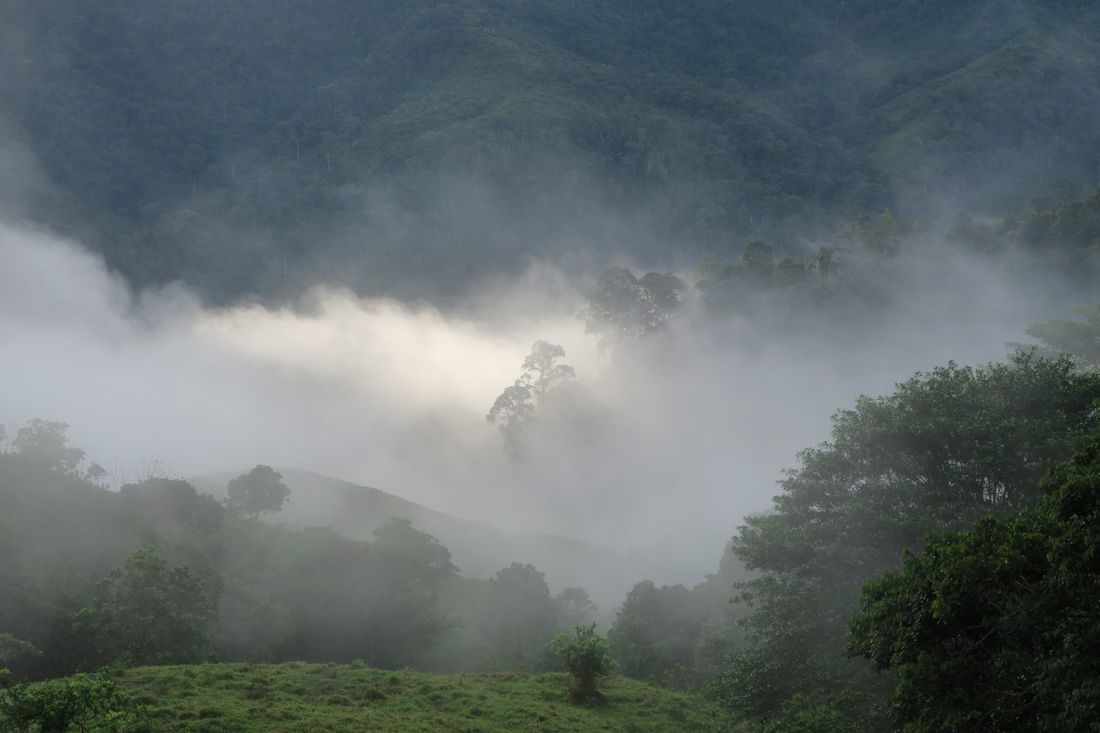
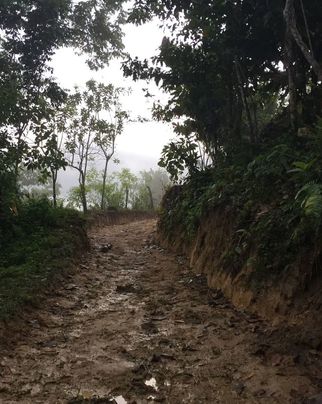
While the first evening in the camp was filled with jumps into natural pools and delicious dinner and card games, the following night showed us where the rainforest got its name from. When we got up at 5 am the next morning our clothes were still wet from the sweat and so was all the ground along the way. The white sand turned into grey mud and what was solid earth before became a mudslide over night. When we started hiking at 6 o’clock heavy raindrops kept falling and if it wasn’t for the rain covers of our backpacks everything inside would have been wet instantly. Holding my balance on the mud took so much attention that I was hardly able to think about anything else. Good exercise to stay in the moment, yet it was a matter of time until the moment one fell. Guess, who was first finding out what the jungle looks like from the ground?
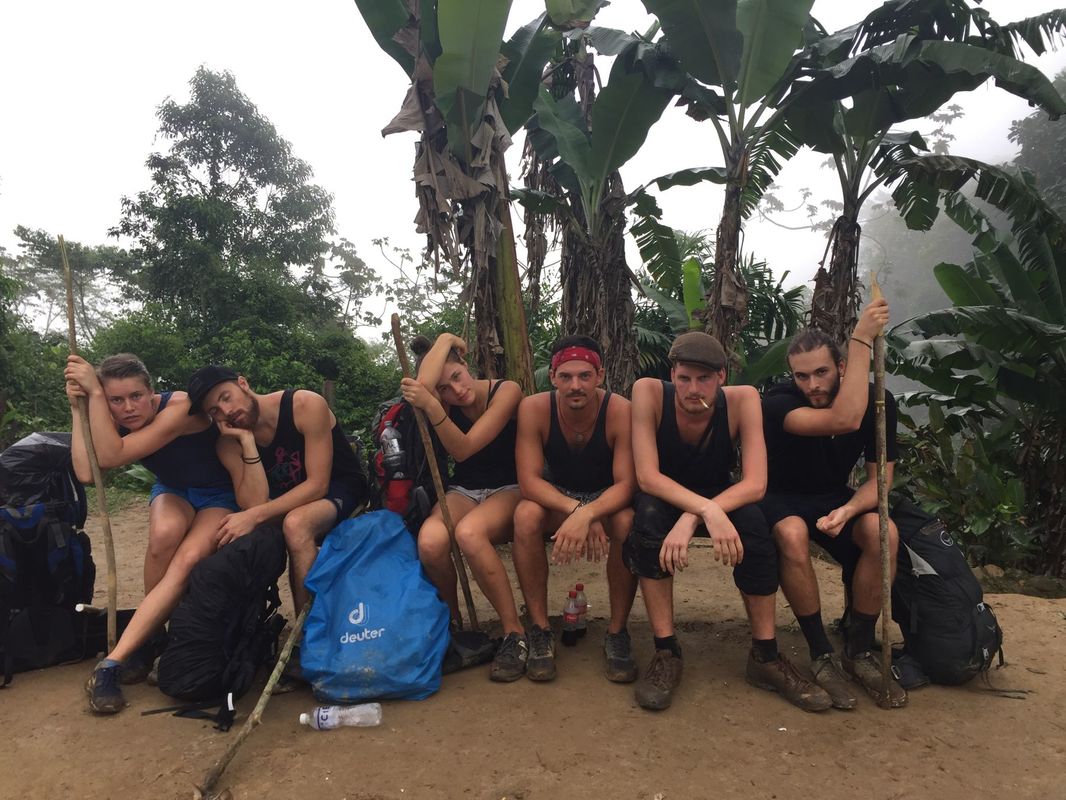
Colombia has – after Brazil – the second biggest biodiversity in the world
What surrounds us are mammut trees of thirty meters and higher, bamboo of only a slightly smaller size, palm trees and banana plants and much other tropical flora that I am not capable to identify. The jungle is so deep one can hardly see further than five meters into the thicket. A massive and colorful spider showed us the way deeper into the forest – everything is just so much bigger here. And suddenly, something that seemed out of context: In the middle of seemingly nowhere there were some sheeps lying in the rain chewing grass and it smelled like a campfire burning closeby and two young girls were running around in white dresses. Indios are living here in their wooden houses with roofs of palm trees. They have adjusted a bit to the modern world and get some of their supplies delivered by mules up from the village, yet they are the heritage of the ancient Colombian tribes whose ruins of the „Lost City“ we are just about to visit.
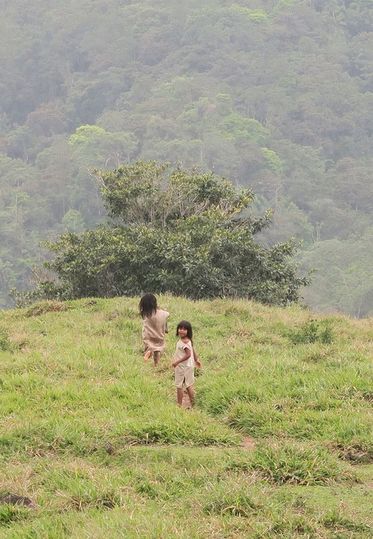
It’s just that the rain didn’t stop
In the morning of day three we were supposed to walk the last 45 minutes to Ciudad Perdida. A short walk compared to what lies behind which includes crossing a brook and stepping up 1.200 natural stairs. But the brook turned into a torrential river, over night. The place we swam and showered the evening before turned into a dangerous rapid current. Some guides from other groups tensioned a rope across the river and when one tried to cross he was almost swept away. In that case, his chances of survival wouldn’t have been too big. All the adventurers queueing up to cross had to reverse and accept the facts: The river is too dangerous to cross and it was still raining. Standing with our feet in the river looking at the other side which we were not able to reach made for a strange feeling. Our guide Eliseo has been here seventy times: „This is the first time that I see the river that big. Never have we ever had to turn back here without having seen the lost city.“
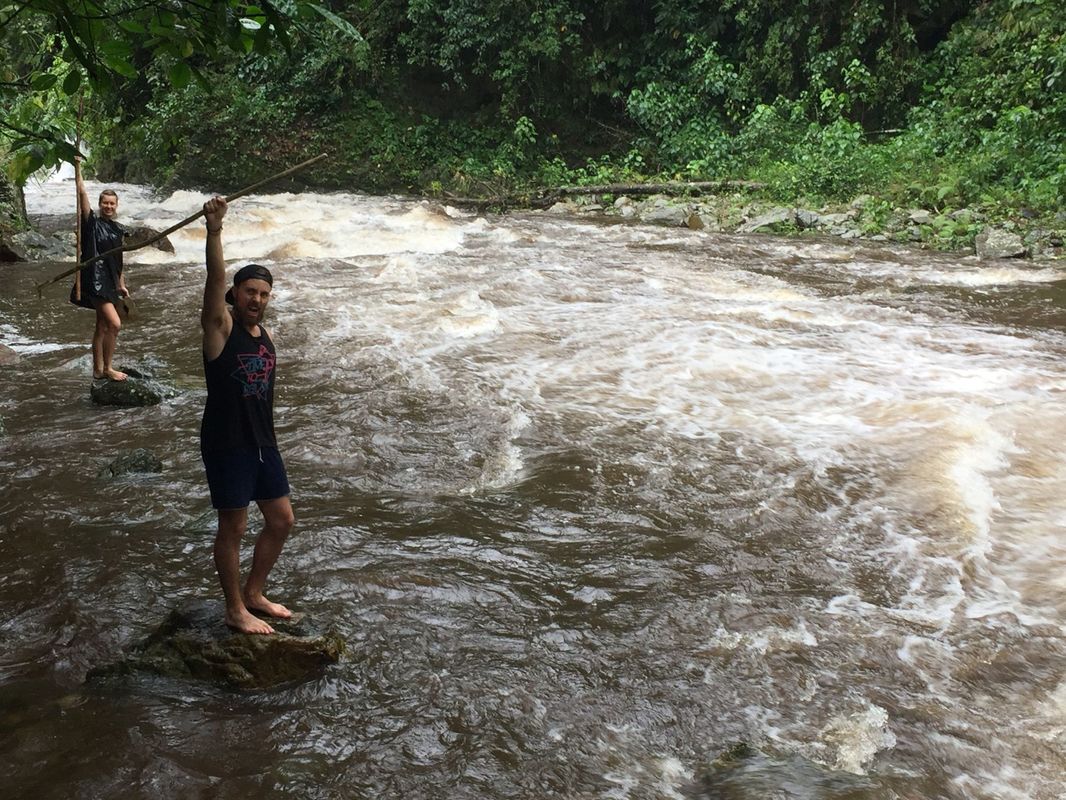
That made us laugh
First slightly, then we were cracking up. We might be among the first ones who don’t make it to the Ciudad Perdida because of too much water. We somehow feel special. Most people who come here just walk over the brook and up to the ruins, take pictures, go home and tell their friends they’ve been here. Our story is different. Aslaug, Martin’s girlfriend, put it that way: „If the one thing that ever defeats me is nature, I’m ok with it.“ However one wants to deal with this situation, complaining about rain in the rainforest might not be the smartest thing to do.
Hope dies last
If the river swells down a bit we still have a chance to see „The Lost City“, although I started to feel comfortable with the possibility of not making it. The trek itself was such an adventure worth all the effort and I tried hard to rid myself from being disappointed. „Go with the flow“, I thought. I soon got reminded that there are probably better surroundings than a torrential river to state that.
„There is a group in the ruins“
With these words our guide told us that the river has gone down a bit and there might be a chance to cross now. Five minutes later we were packed with walking sticks in our hands and black garbage bins on our shoulders, ready for one more try. This time it worked. One ofter another got tied to a rope and pulled himself to the other side of the river.
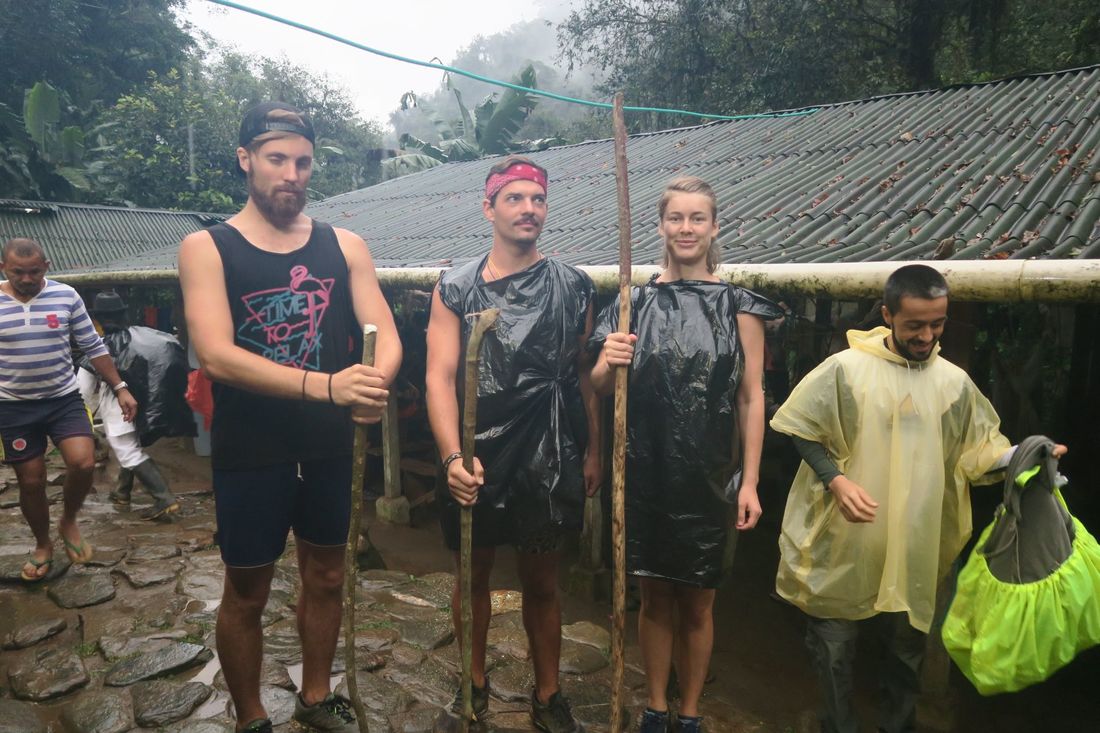
Half an hour and 1.200 stair steps later we arrived in Ciudad Perdida
Huge palm trees grow high up on the hill, wet air builds thick fog that makes their majestic tops appear in a blurred shape of grey. It smells like mud and wet wood and even up here we can hear the river pushing down gigantic masses of water. „The lost city“ is shaped around the hills, they built terraces to make the ground even. The first one was built around the year 700 AC, the Indio’s golden age here was around 1200 AC. Around 2500 people were living here until the 19th century, before a curse ruled almost all of them out –at least that’s what their descendants believe. An epidemic disease killed most of the citizens around the year 1850. Those who survived escaped from the Spains, who were more and more advancing towards the mountains of the jungle. Four families survived, the legend tells, who separated and founded the four tribes of Indio’s who are still living here today.
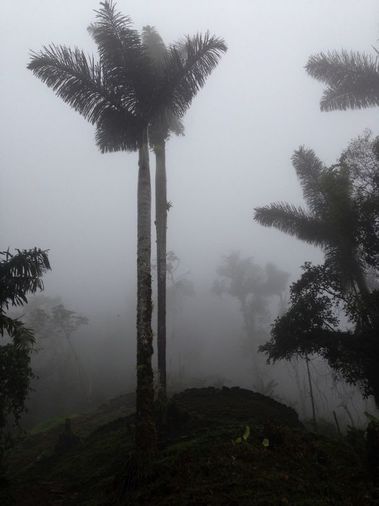
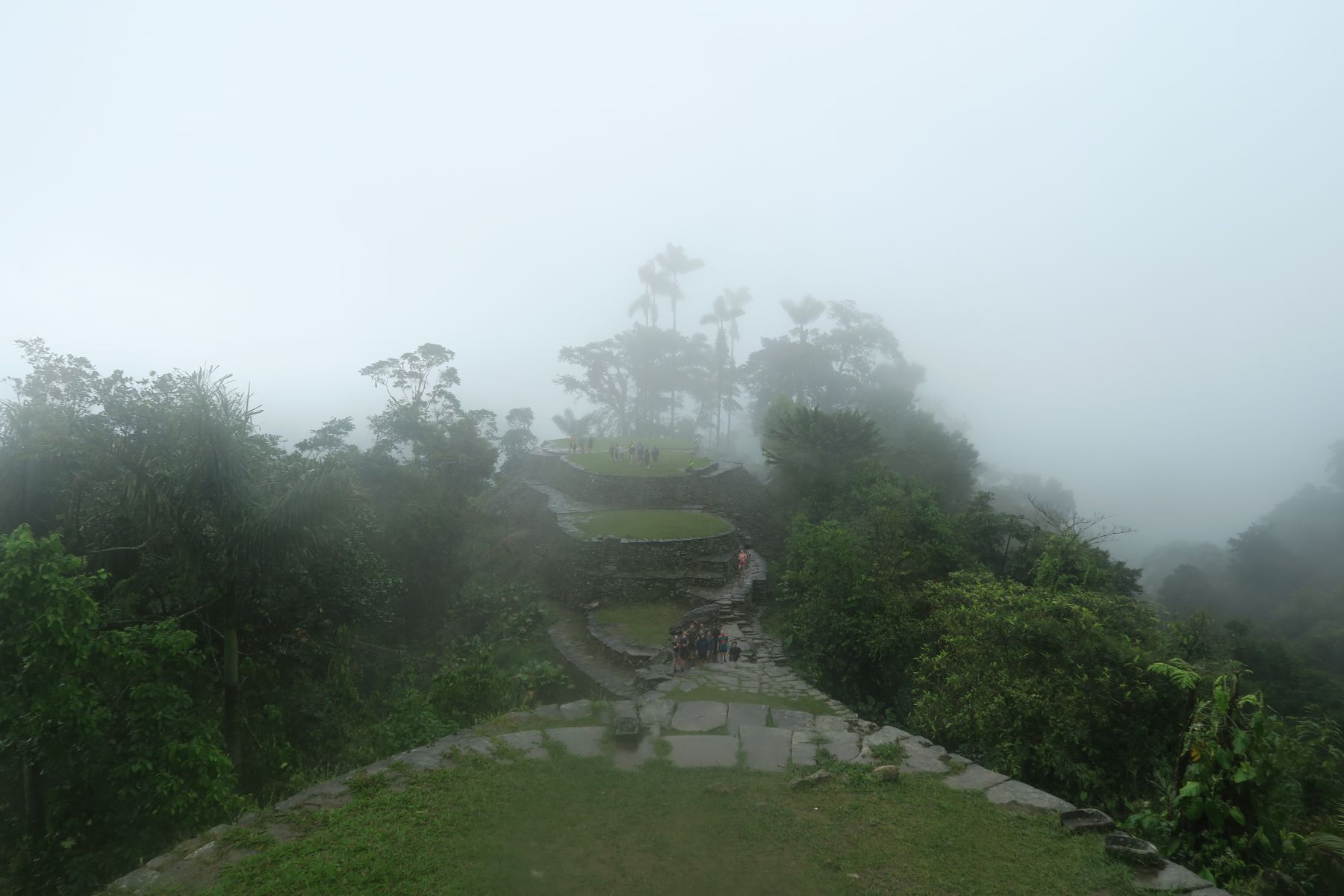
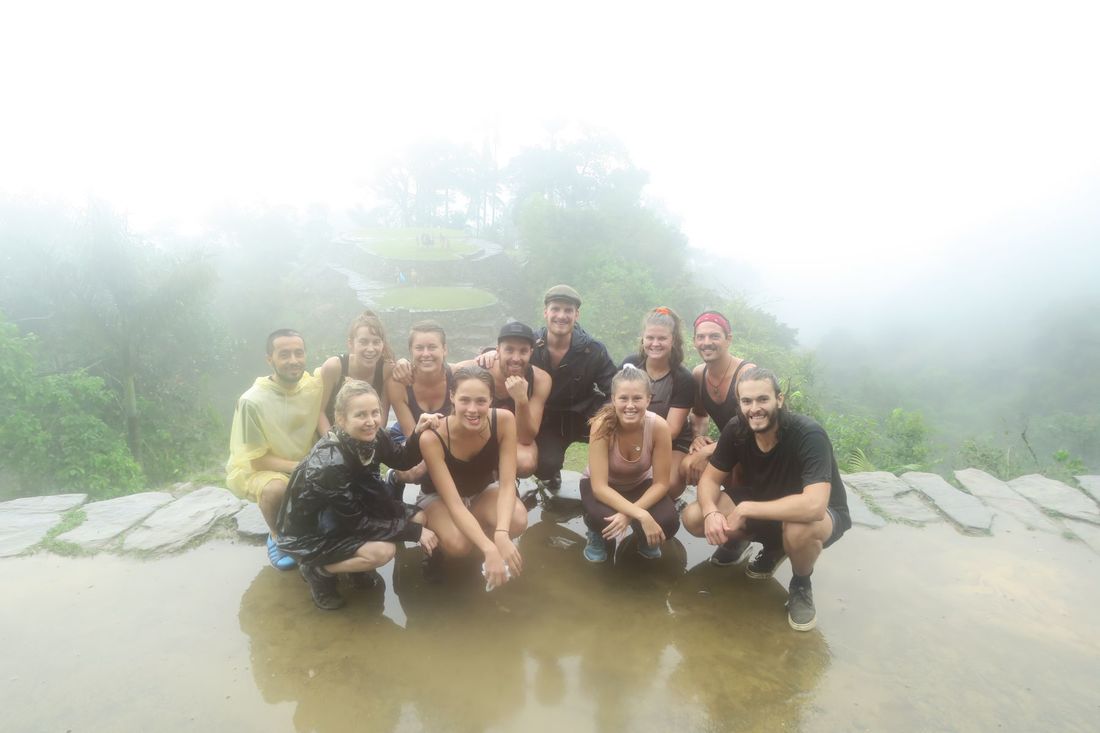
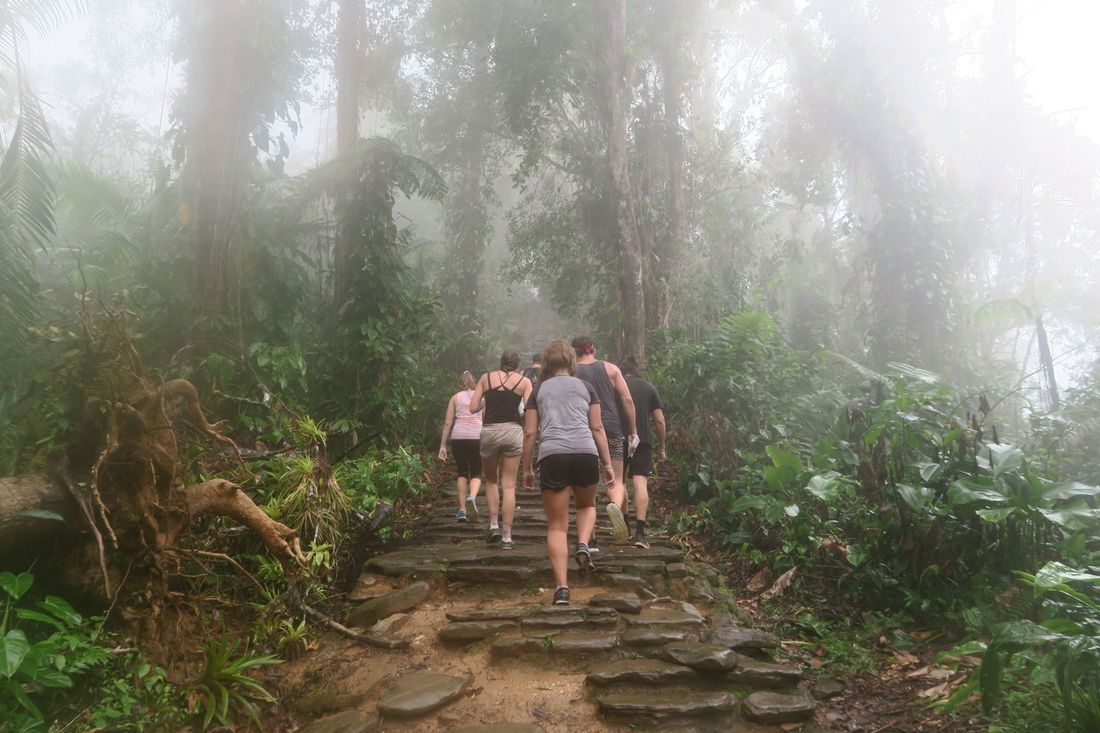
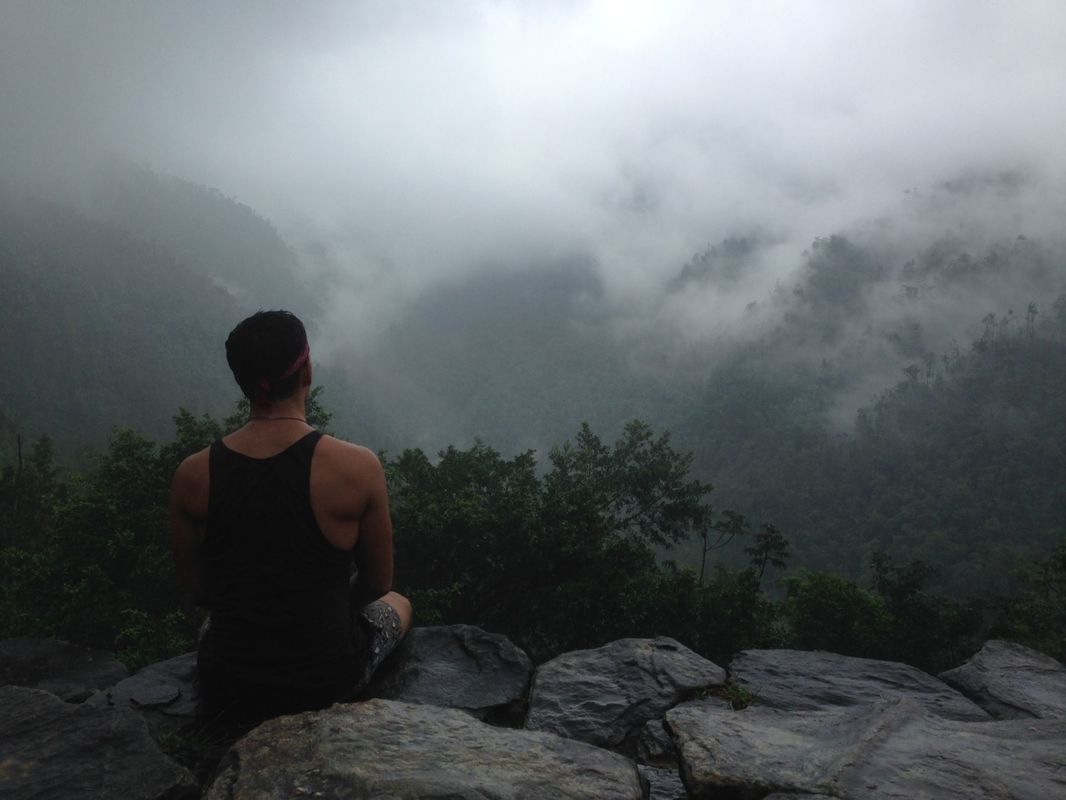
There is a certain kind of freedom in being wet and dirty all over the body. Falling in the mud didn’t bother me anymore and even the continuing rain became somehow enjoyable. Happy that we have made it to this hidden jewel of humanity’s history we started our hike back and the next day. Shortly before we arrived were we started, the rain stopped. My shoulders are burning from the weight of the backpack and after 46 kilometers of hiking my feet feel heavy like lead. Limping and full of scratches and mosquito bites we passed a group that looked fresh and motivated to start what we have just ended. We passed on our walking sticks, wished them a good hike and … resisted the temptation of making any other comments.
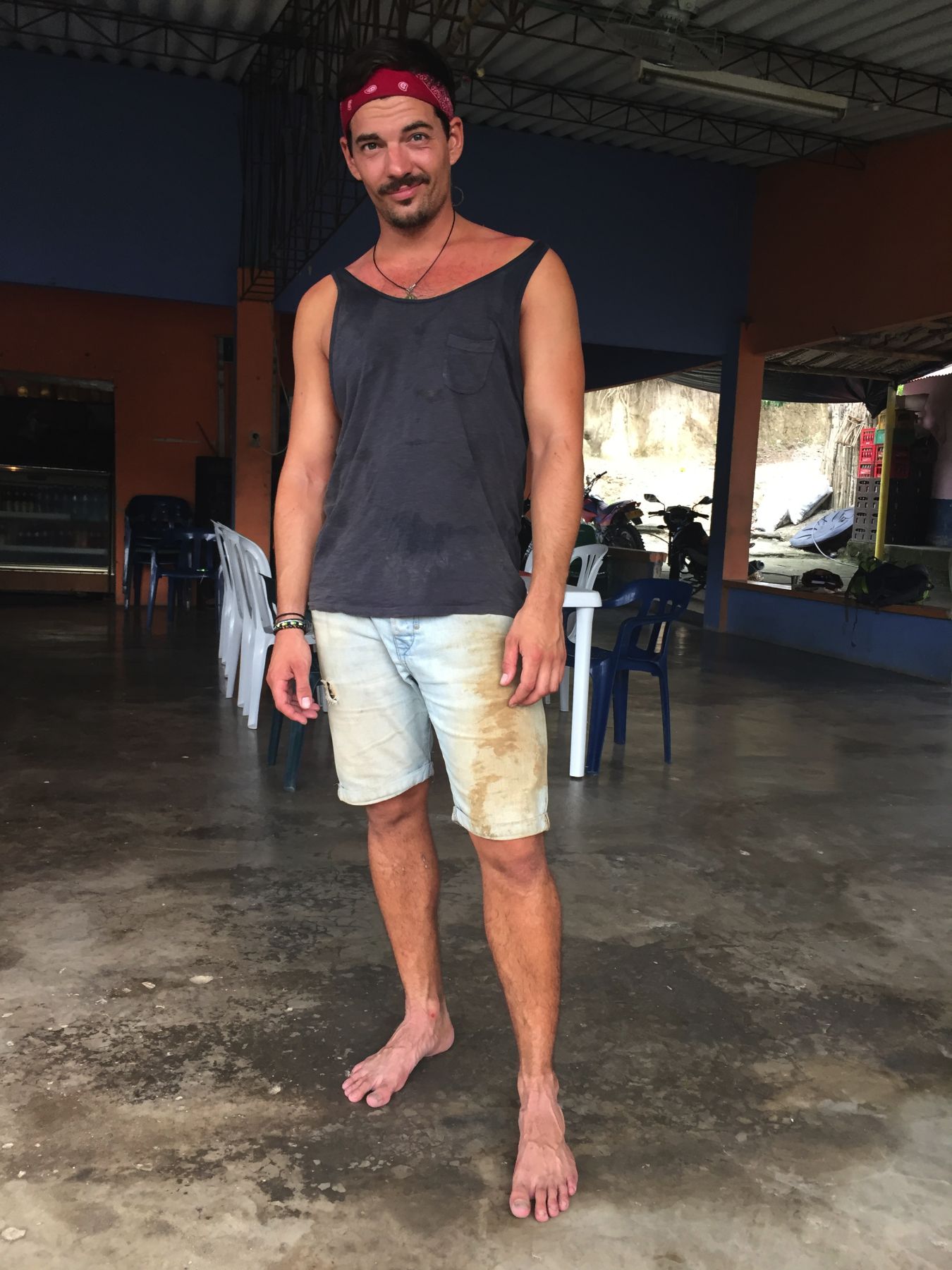
Distance walked: 46 kilometers
Days in the jungle: 4
In wet clothes: 3
Times fallen in the mud: 6
Price: 265 Euro
